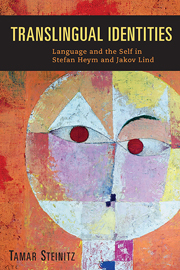Book contents
Introduction
Published online by Cambridge University Press: 05 October 2013
Summary
My private tragedy, which cannot, indeed should not, be anybody's concern, is that I had to abandon my natural language, my natural idiom, my rich, infinitely rich and docile Russian tongue, for a second-rate brand of English.
—Vladimir NabokovOur identity is at once plural and partial. Sometimes we feel that we straddle two cultures; at other times, that we fall between two stools. But however ambiguous and shifting this ground may be, it is not an infertile territory for a writer to occupy.
—Salman RushdieThe decision to abandon one's mother tongue for another language is one of the most profound aspects of exile experience, often fraught with feelings of loss and alienation: Vladimir Nabokov, for example, described his break with his native Russian as “exceedingly painful— like learning anew to handle things after losing seven or eight fingers in an explosion.” It is no coincidence, perhaps, that the native tongue is described in various languages as the mother tongue, as Steven G. Kellman has pointed out in The Translingual Imagination: “Muttersprache, langue maternelle, mama loshen, sfat em, lengua materna, modersml, lingua maternsa, matesk jasyik.” Severing this primal connection, then, can be perceived, as Kellman goes on to say, as “tantamount to matricide” (ix). Yet such a linguistic switch can also be viewed as an advantage: the adopted language becomes a refuge, affording the writer creative distance and a new sense of perspective.
- Type
- Chapter
- Information
- Translingual IdentitiesLanguage and the Self in Stefan Heym and Jakov Lind, pp. 1 - 19Publisher: Boydell & BrewerPrint publication year: 2013



